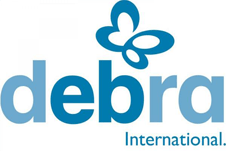

No one understands EB better than those people living with it every day.
These rare, genetic and debilitating skin and tissue conditions can be life-threatening and impact patients and families in a profound way. Although their skin is fragile, for those suffering with EB, their determination is not.
4 main types of EB
caused by mutations
in as many as 21 genes 1,2
Being genetic
means the condition is inherited in families and present from birth1,2
EB affects
males and females
equally
and can occur
in all ethnicities1,2
Managing EB
is based on protective bandaging, wound care and pain management1,2
Epidermolysis bullosa (EB) is a rare, inherited condition in which the skin is very fragile.
Because the skin is so fragile in people with EB, even minor friction on the skin can cause painful blisters and open wounds that are slow to heal and can lead to significant scarring.
Not only does EB affect the external skin, but also the lining of the mouth and throat, the eyes, and the digestive system.1,2
There are four main types of EB and they range in how severely they affect a person. The most severe forms are junctional EB (JEB), and dystrophic EB (DEB). EB can have a big impact on how patients do everyday things that others may take for granted.1,2
Living with EB means living each day with serious wounds that must be protected and encouraged to heal. For patients and families living with EB, it means limiting how they live in order to minimize the risk of new wounds. It's a challenging condition for both patients and caregivers.
People with EB must take extraordinary measures to protect their fragile skin, and despite their efforts, many still live with chronic wounds all over their body. These wounds are extremely painful and itchy.1,2
It's an ongoing battle to keep wounds healing and regular bandage changes, using special non-adhesive wound dressing, are necessary. These wound dressing changes are often very painful and can take hours. For the parents and caregivers who are involved in these daily bandage changes, the pain goes both ways.1,2
If you or someone you care for has been recently diagnosed with EB, you will find that there is a dedicated community of people who are committed to helping those living with this difficult condition. Patient organizations can provide information and resources, and a caring healthcare and research community are committed to finding new ways of treating EB.
Below are various organizations that work to support EB patients and their families and caregivers. This listing is provided as a resource only and does not constitute an endorsement by Chiesi Farmaceutici S.p.A. of any particular organization.

An EB patient support and advocacy network whose aim is to coordinate, in collaboration with its members, activities that are for the benefit of everyone affected by EB globally.
www.debra-international.org
Logo is the property of the respective organization.